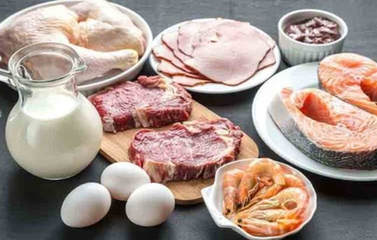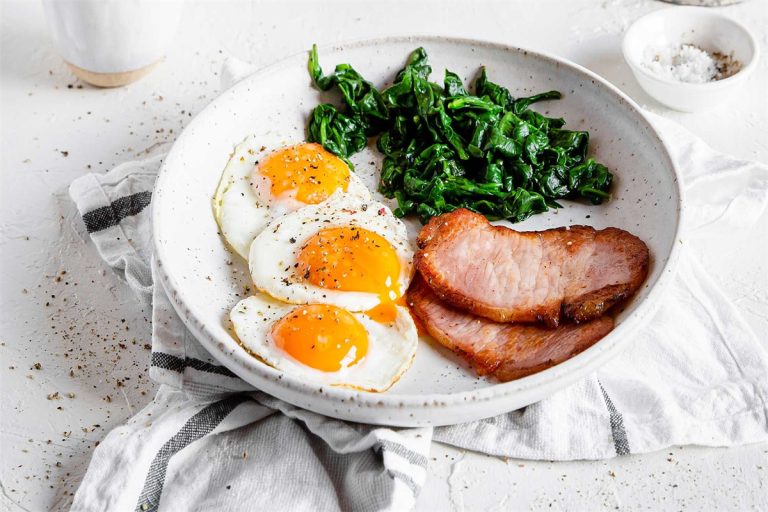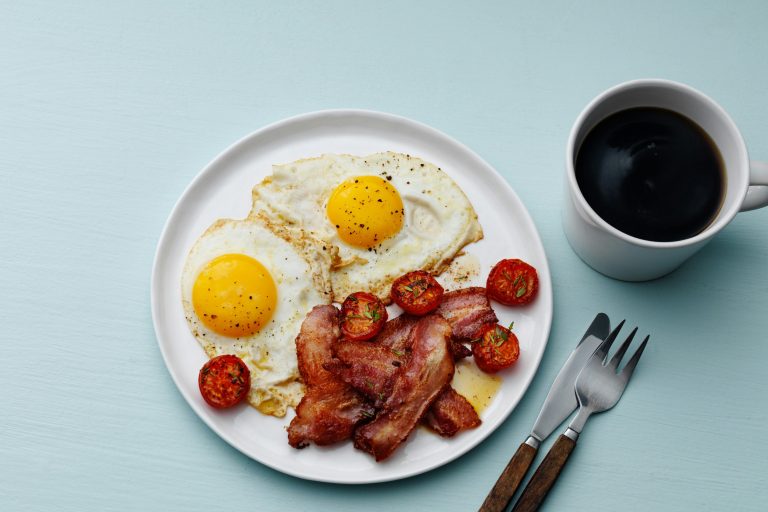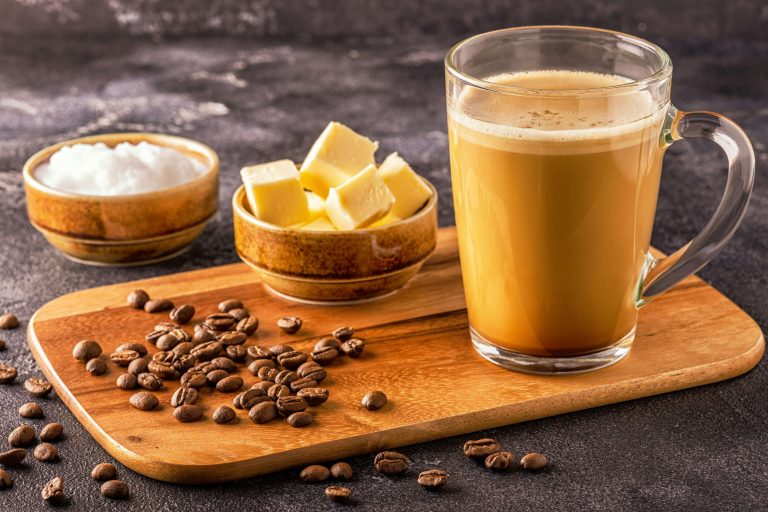What is a lazy ketogenic diet? Advantages, disadvantages, and tips.
A More Relaxed Version of the Traditional Ketogenic Diet The Lazy Keto diet is a more relaxed version of the traditional ketogenic diet. Some of its benefits include fat loss, reduced food cravings, and improved blood sugar control. To maintain the low-carb focus of the diet, avoid high-sugar and high-starch foods. The ketogenic diet is…
A More Relaxed Version of the Traditional Ketogenic Diet
The Lazy Keto diet is a more relaxed version of the traditional ketogenic diet. Some of its benefits include fat loss, reduced food cravings, and improved blood sugar control.
To maintain the low-carb focus of the diet, avoid high-sugar and high-starch foods.
The ketogenic diet is famous for its strict macronutrient tracking. Traditional keto requires meticulous calculations of fats, proteins, and carbohydrates to ensure you stay within the specific range needed to induce ketosis—a metabolic state where your body burns fat for energy .
However, the good news is that there are now various versions of the ketogenic diet to suit different needs and preferences. One of them is the “Lazy Keto” diet.

What Is Lazy Ketogenic diet?
Lazy Keto is a simplified version of the ketogenic diet. Instead of carefully tracking all macronutrients (carbohydrates, fats, and proteins), it primarily focuses on keeping carbohydrate intake very low—usually below 20-50 grams per day—while not worrying too much about the other nutrients.
For example: For breakfast, you might have scrambled eggs cooked in butter. Butter is low in carbohydrates and high in fat and protein. For lunch, you could enjoy a leafy green salad with grilled chicken and high-fat dressings like olive oil and vinegar. You would avoid adding high-carb ingredients like croutons or sugary dressings.
What’s the Difference Between Lazy Keto and Strict Keto?
The main difference between Lazy Keto and Strict Keto lies in how closely you track your food. Lazy Keto primarily focuses on keeping carbs very low (below 20-50 grams per day) and doesn’t track fats and proteins. In a strict ketogenic diet, you carefully track all macronutrients to maintain a specific ratio: about 70-80% fat, 10-20% protein, and 5-10% carbohydrates. This detailed tracking helps you stay in ketosis and maximize the diet’s effectiveness.
Reduced monitoring makes Lazy Keto easier to follow. On the other hand, those seeking specific health outcomes, such as significant weight loss or managing certain medical conditions, may benefit from more detailed tracking (i.e., strict keto) because it can optimize their nutritional intake.

Benefits of Lazy Keto
If you’re exploring different versions of the ketogenic diet, Lazy Keto might be an appealing option for you. Here are some reasons why it might be worth considering:
- Less Stressful: Lazy Keto primarily focuses on keeping carbohydrate intake very low. This reduces the complexity and workload of managing the diet. This approach is perfect for those with limited time who still want to experience ketosis.
- More Sustainable: With fewer restrictions, it’s easier to adapt to daily life and maintain long-term. Since you’re mainly concerned with reducing carbs, you can enjoy a wider variety of foods and even dine out.
- Fat Loss: When you significantly reduce carbohydrate intake, your body has to find an alternative energy source. Often, it turns to stored fat as the primary fuel, which can help you achieve your fat-loss goals. In a study comparing different diets, participants on a low-carb diet (LCD) lost more weight than those on a control diet. Specifically, they lost an average of 6.9 kg compared to 5.8 kg [ *].
- Reduced Food Cravings: Lower carbohydrate intake typically reduces hunger and cravings because the ketones produced from fats help stabilize appetite. Unlike other diets that often increase hunger and cravings (due to higher levels of ghrelin), the ketogenic diet can reduce ghrelin, making it easier to stick to the diet and continue losing weight [ *].
- Improved Blood Sugar Control: Limiting carbohydrates helps manage blood sugar levels more effectively. This is beneficial for those struggling with insulin resistance or diabetes.
Drawbacks of Lazy Keto
While Lazy Keto offers a simpler and more flexible ketogenic lifestyle, it does have some potential downsides. Here are some challenges you might face:
- Difficulty Achieving Ketosis: Without tracking fat and protein intake, it may be harder to reach or maintain ketosis, especially if your carb intake is slightly above the ideal level. If you only focus on reducing carbs without monitoring fat intake, you might not create the right metabolic conditions for ketosis.
- Risk of Overeating: Lazy Keto primarily focuses on reducing carbohydrate intake and doesn’t require detailed tracking of total calorie consumption. Without monitoring calories, you might overeat, even if the foods are low in carbs. This can hinder effective weight loss.
- Limited Research: Compared to the traditional ketogenic diet, there is less research specifically on Lazy Keto. Most studies focus on stricter keto methods, so there is less documentation on the long-term effects and effectiveness of Lazy Keto.
Foods to Eat and Avoid on Lazy Keto
To help you stay on track with Lazy Keto and maximize its benefits, here’s a quick reference guide of foods to focus on and those to avoid. Use this list to make smart food choices.

Foods to Eat:
- High-Quality Meats: Beef, pork, poultry, lamb, steak, ground meat, bacon, sausage.
- Eggs: Chicken eggs, duck eggs, quail eggs.
- Fish and Seafood: Salmon, tuna, cod, haddock, mackerel.
- Nuts: Almonds, Brazil nuts, hazelnuts, pecans, walnuts.
- Seeds: Chia seeds, flaxseeds, hemp seeds, sesame seeds, sunflower seeds, pumpkin seeds.
- Full-Fat Dairy: Butter, Greek yogurt, heavy cream, milk, hard cheeses.
- Healthy Oils: Olive oil, avocado oil, flaxseed oil, coconut oil.
- Low-Carb Vegetables: Leafy greens and above-ground vegetables.
- Low-Carb Fruits: Avocado, watermelon, raspberries, strawberries, blackberries.
- Pantry Staples: Vinegar, tomato paste, olives, mayonnaise, almond flour, coconut flour.
- Unsweetened Beverages: Coffee, tea, soda water.
Foods to Avoid:
- Sugary Foods: Cookies, cakes, pastries, sweetened yogurt, ice cream, honey, maple syrup, cereal.
- Starchy Foods: Bread, pasta, rice, potatoes, chips, crackers, bagels, biscuits, oats, granola, cereal.
- High-Sugar Fruits: Bananas, apples, oranges, mangoes, grapes, pears, pineapple.
- Grains: Wheat, rice, oats, buckwheat, bulgur, barley.
Lazy Keto Tips
Follow these tips to easily adapt to a ketogenic lifestyle without the stress of detailed tracking:
- Focus on Whole Foods: Choose whole, unprocessed foods whenever possible. These are less likely to contain hidden sugars or carbs and are usually more nutritious.
- Monitor Carb Intake Closely: Although you’re not tracking every nutrient, keeping a close eye on your daily carb consumption can help you stay on track.
- Mind Portion Sizes: Even with Lazy Keto, avoid overeating, especially high-fat foods. While fat is a staple of the diet, moderation is key to balancing intake.
- Incorporate Healthy Fats: Focus on healthy fats like olive oil, coconut oil, and nuts. They will help keep you full and support ketosis.
- Plan Your Meals: Even with a relaxed approach, having a rough meal plan can help you avoid high-carb temptations and make your dietary transition smoother.
Common Questions About Lazy Keto
Here are some frequently asked questions about the Lazy Keto diet to help clarify how this simplified ketogenic approach can work for you.
Can I Still Achieve Ketosis with Lazy Keto?
Yes, you can still achieve ketosis with Lazy Keto by keeping your carb intake low, usually below 20-50 grams of net carbs per day. While you won’t track every detail, focusing on low-carb, high-fat foods and avoiding high-carb foods will help you maintain ketosis.
Can I Lose Weight with Lazy Keto?
Even if you don’t achieve full ketosis, you can still lose weight with Lazy Keto because reducing carbs can lower your calorie intake and improve fat burning. However, reaching ketosis typically enhances fat loss and appetite control, which is beneficial for more consistent weight loss.

How Long Does It Take to See Results with Lazy Keto?
The time it takes to see results with Lazy Keto can vary, but many people start noticing changes within a few weeks. Initial weight loss may occur in the first 1-2 weeks due to water loss, and fat reduction will gradually follow in the weeks after.
Personal factors like adherence to the diet, metabolism, and activity levels will affect the speed and extent of your results.
Is Lazy Keto Right for You?
If you’re looking for a practical option while enjoying the benefits of a low-carb lifestyle, Lazy Keto might be the perfect choice for you. Besides keeping carb intake below 20-50 grams per day, remember to focus on whole foods and incorporate healthy fats.




